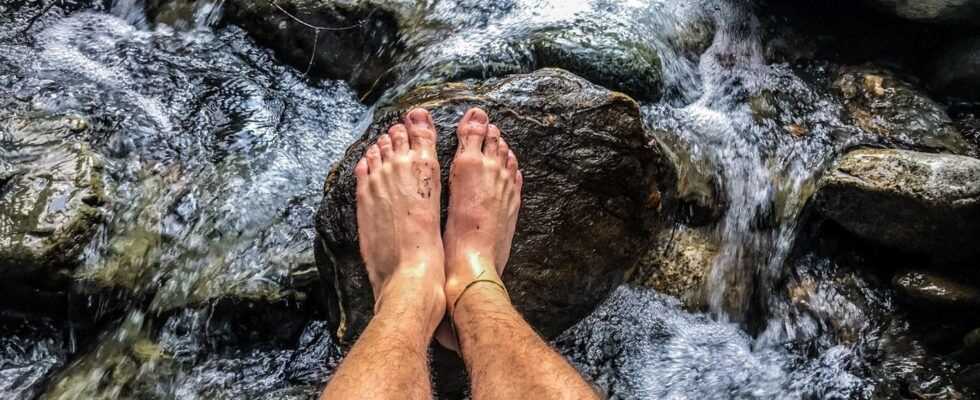Kneipp cure
This is how it works
© Emanuele Longo / Shutterstock
The Kneipp cure is intended to activate the body’s self-healing powers. We explain how the method works and whether it actually works.
Kneipp cure – what is it actually?
Pastor Sebastian Kneipp (1821–1897) developed his holistic, naturopathic health theory based on his own experience, which regards body, mind and soul as a complex unit. The aim of the so-called Kneipp cure is to strengthen the organism and activate the body’s self-healing powers,to alleviate ailments, but also to prevent diseases.
The simplest and most natural means and stimuli are used in the Kneipp cure. These include:
Kneipp treatments are carried out by trained therapists outpatient or as part of Kneipp cures administered. But many are also well suited for self-treatment.
What methods do you use for the Kneipp cure?
The Kneipp cure comprises five pillars:
- Hydrotherapy: Kneipp spa with applications with cold and warm water such as pourings, baths, compresses, treading water and treading on the dew
- Phytotherapy: Treatment with medicinal plants in the form of fresh plant juices, teas, bath additives or hay bags
- Exercise Therapy: Gymnastics and endurance sports
- Nutritional Therapy: balanced whole foods
- Order therapy: “Living in balance” includes relaxation methods like yoga and autogenic training
For which complaints does the Kneipp cure make sense?
The Kneipp cure is used for the following ailments and illnesses:
- Susceptibility to infection
- Infections
- Circulatory disorders
- Cardiovascular diseases
- high blood pressure
- low blood pressure
- Vein problems
- States of exhaustion
- rheumatism
- degenerative changes in the joints and spine
- osteoporosis
- migraine
- fever
How well is the Kneipp cure scientifically proven?
From a conventional medical point of view, Kneipp therapy is scientifically well founded through studies. Exercise and a healthy diet are standard today, especially for the prevention and treatment of cardiovascular diseases and other civilization ailments. That is why many debt physicians use Kneipp treatments inside as a supplement.
The 9 best home remedies from around the world
9 pictures
What are the limitations of the Kneipp cure?
The Kneipp cure should not be used for the following ailments and illnesses:
Can side effects occur as a result of the Kneipp cure?
Side effects are hardly to be expected. An initial deterioration may occur. Hay bags / hay baths and herbal remedies can cause allergies. For herbal medications, please read the package insert carefully!
In the case of cardiac arrhythmias and angina pectoris, cold stimuli can exacerbate symptoms. The general rule: Get a medical diagnosis before any self-treatment! If you feel cold or have a sensitive bladder, you should not use cold water.
Who is the Kneipp cure suitable for?
The Kneipp therapy is suitable for everyone who prefers natural healing methods and / or wants to do something beyond conventional medicine, but who also want to be “cared for” therapeutically. The particular strength of the cure lies in the prevention of diseases by strengthening the immune system and reducing stress.
What does the treatment cost?
Statutory health insurance companies pay the costs for hydrotherapeutic applications and individual phytopharmaceuticals according to a doctor’s prescription. The additional payment varies depending on the health insurance company. Popular health resorts for Kneipp therapy are, for example, Bad Kötzing and Bad Wörishofen in Bavaria, the home of Sebastian Kneipp.
sources
Krüger, A .: History of Movement Therapy, Preventive Medicine, Springer Loseblatt Collection, 1999
Kneipp, S .: Meine Wasserkur, Trias Verlag, 2018
Mayer, JG et al .: Handbuch der Klosterheilkunde, Zabert Sandmann Verlag, 10th edition, 2006
